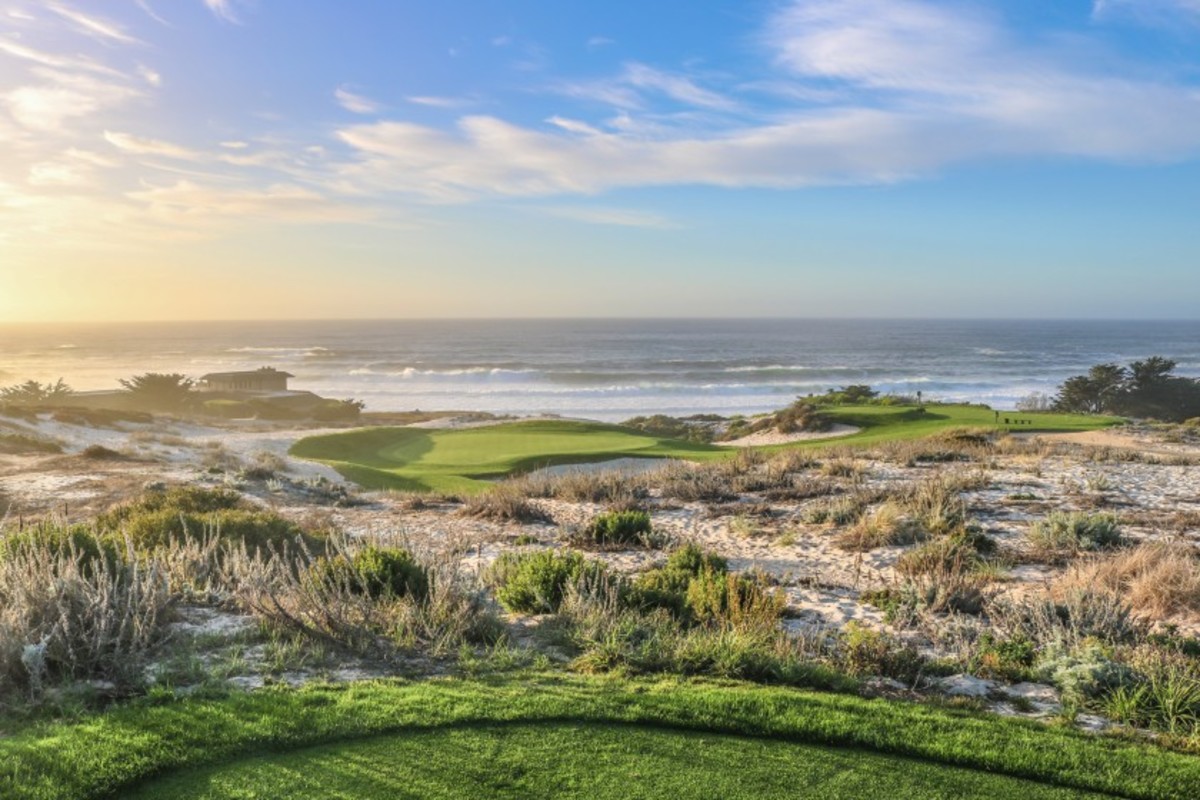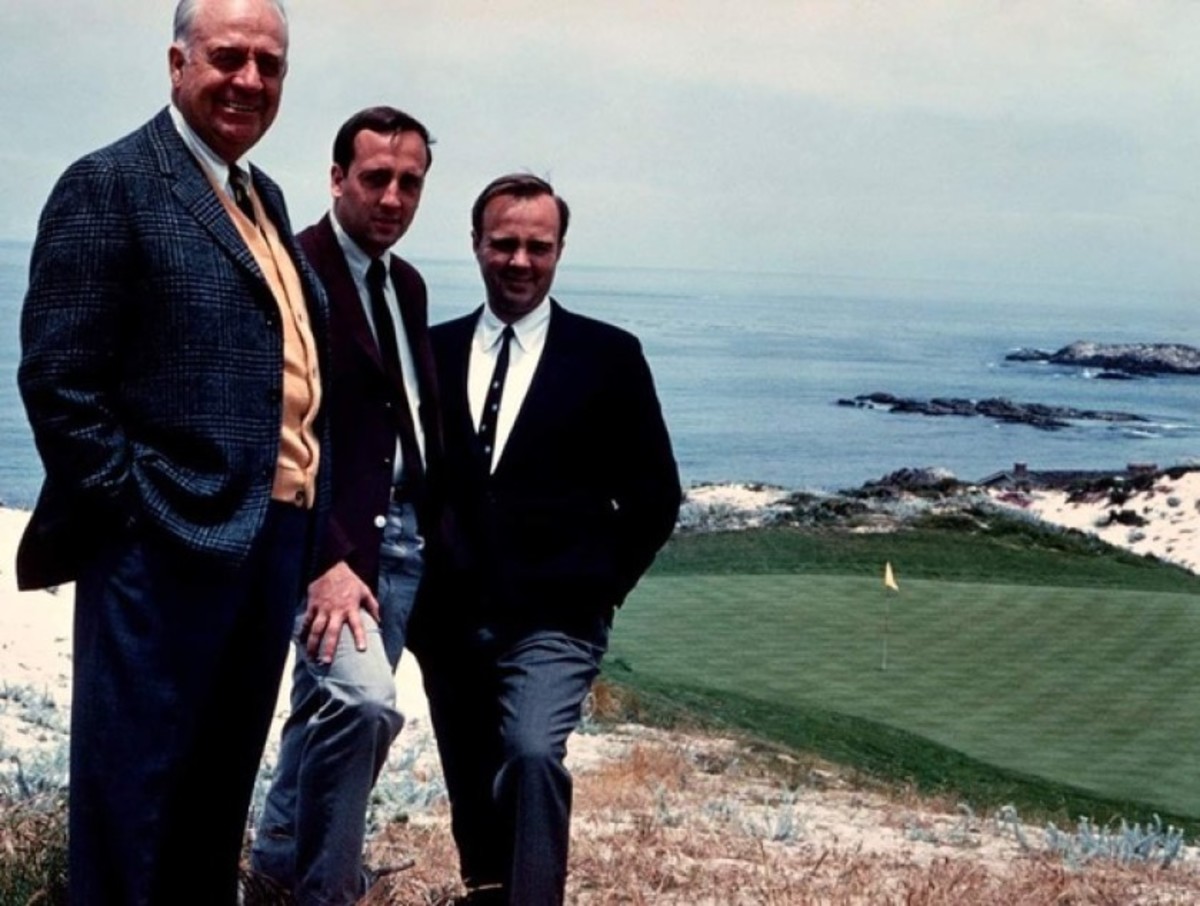Summer solstice at Spyglass Hill

One of the many casualties — admittedly not a tragic one — of the COVID-19 pandemic is the temporary suspension of the Twilight discount golf rate at Pebble Beach Resorts. As a result, there are no late afternoon savings to be had, at least for now, at one of the outstanding twilight values in golf, a sunset round at Spyglass Hill.
While that’s unfortunate, it’s not a deal-breaker. Underrated Spyglass Hill isn’t Pebble Beach, and yes, it’s pricey, but if you’re going all the way out to Pebble, you’ve got to play Spyglass, whatever the going rate.
For 2020, Pebble Beach Resorts set a green fee of $415 to play Spyglass Hill for resort guests, $415 plus cart fee ($45) for non-resort guests. The Twilight rate was to have been $225 for resort guests, $225 plus cart if you were staying elsewhere. Two hundred and twenty-five dollars isn’t exactly cheap, but it’s nearly half the regular price to play a gorgeous, PGA Tour co-host that’s a consensus top 12 public course in America.

In years past, summer Twilight tee times often began at 5 p.m. There was no guarantee you would finish the round, but that never troubled me. Unlike at its sibling, Pebble Beach, where if you didn’t complete the 17th and 18th holes, it was a colossal disappointment, at Spyglass, the most dramatic, memorable holes come early, especially the dune-filled stretch of 2 through 5 that edges the Pacific Ocean. If flashlights were necessary by the 16th hole, that was OK. You would have already tangled with some of the most beautiful, challenging holes in golf.
So, with summer solstice upon us, let’s shine some serious daylight, with the help of Robert Trent Jones Jr., who assisted his father with the design, on what makes Spyglass Hill such a magical experience at any hour.
Spyglass Hill was the early 1960s brainchild of Fran Watson and Bob Hanna, two executives with the Northern California Golf Association. Then based in San Francisco, the NCGA was seeking to build a new course of its own to host events and tournaments. They called on Robert Trent Jones to assist with a presentation at Pebble Beach, which owned the land where they wanted to build the new course.
“This was March of 1962. My dad was at the height of his career then,” said Jones Jr. “I was then at Stanford Law School. My dad called and said, ‘I’m coming to see you, Bobby.’ He slept on the couch in my frugal apartment. The next morning, Watson and Hanna came to pick him up and took him down to Pebble, to meet with the Duke of Del Monte, Samuel F.B. Morse, who presided over Pebble Beach.

“My father understood from an artistic standpoint that having a golf course in Pebble Beach was like having the Pope invite you to create artwork at the Vatican. He returned from the trip really excited, like a boy at Christmas. He rolled out a piece of paper and started sketching. The NCGA needed to raise money for the project and he asked me if I would assist in the effort and come up with the price to build it. I came up with a figure of $487,000 for the whole turnkey operation to produce the course, and that included a $40,000 design fee. The NCGA accepted without negotiation in 1963 and we started construction in 1964. Those were the days when I was in my apprenticeship. I was carrying his briefcase. But it was his work, his design.”
Spyglass opens with a beautiful brute, a 595-yard par-5 that starts off library-quiet in a chute of tall Monterey pines, then sweeps downhill and to the left to a green backdropped by the Pacific. “Some courses embrace the Tillinghast theme of mild starts, ease you into a round,” Jones Jr. said. “My dad believed that other courses should convey the theme that you’re here for some serious, real golf. That’s what he did at Spyglass. It’s one of the great opening holes in golf.”
Holes 2 through 5 at Spyglass Hill make up one of the best stretches of holes in golf. A short uphill par 4; a shortish, downhill par 3; a short, level par 4; and a mid-length par 3 — these four holes zigzag through beachside dunes and feature full-frontal ocean panoramas.
“Dad used an area of partially mined-out sand — beautiful white, silica sand — that had been used for Owens-Corning glass. That’s how Samuel Morse got through the World War II years. No one was staying at his hotel, so he
mined and sold the sand. Dad claimed that he wanted the first five holes to be inspired by Pine Valley — ‘sod or sand.’ There was minimal earth-moving and no rough. It was very penal, but very beautiful, overlooking the ocean.”
By every measure, the best of the quartet — and one of the greatest holes in America — is the 370-yard, par-4 fourth. Framed by the Pacific Ocean on the left and sand dunes everywhere, the hole is drivable under the right conditions, but only the foolhardy would give it a go, thanks to its one-of-a-kind putting surface. The right-to-left-sloping fairway leads to a tiny sliver of a green tucked into the dunes, and placed on a front-right to back-left axis.

Trent Jones Jr. explained that the “bratwurst-shaped” green falls away on three sides off the back, placing an incredible premium on angle and trajectory on approach shots.
“While we were out there building, I thought he was going to construct the green into an existing dune higher up, near the fifth tee,” Jones said. “I said, ‘What are you doing putting the green down there? How is it going to drain?’ My father replied, ‘It’s pure sand. It will drain.’ I had never seen him do that before. He built elevated greens. Here, however, he showed he could play the black keys as well as the white keys. All these years later, the fourth hole at Spyglass Hill remains one of the most fascinating, enduring, engaging holes in golf.”
Starting with the sixth hole, the course turns inland for a steady diet of gorgeous, but demanding, holes through the trees, with many that play uphill to the green. “My father wanted to emulate his own work at Augusta National,” Jones Jr. said. “He added five ponds, which was revolutionary at the time in northern California. He actually wanted to add another one at the 16th (now a 476-yard par 4 that rates as perhaps the toughest hole on the course) but we talked him out of it as the hole was so hard already.”
Jones Jr. related that his dad preferred the name “Pebble Pines” for his new creation, which was the name used in the working drawings, but Morse asserted that there can only be one “Pebble” — Pebble Beach. Hanna conceived of the Robert Louis Stevenson connection and from there came the course name, a fortunate one at that. Indeed, as the past five-and-a-half decades have shown, there can only be one Spyglass Hill.
Sign up to receive the Morning Read newsletter, along with Where To Golf Next and The Equipment Insider.
